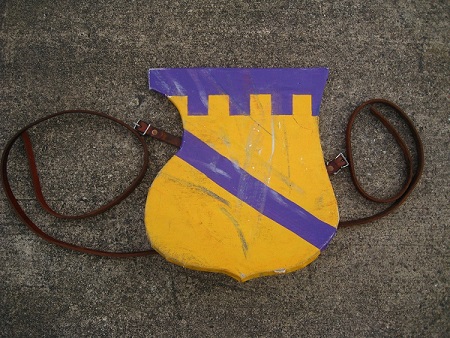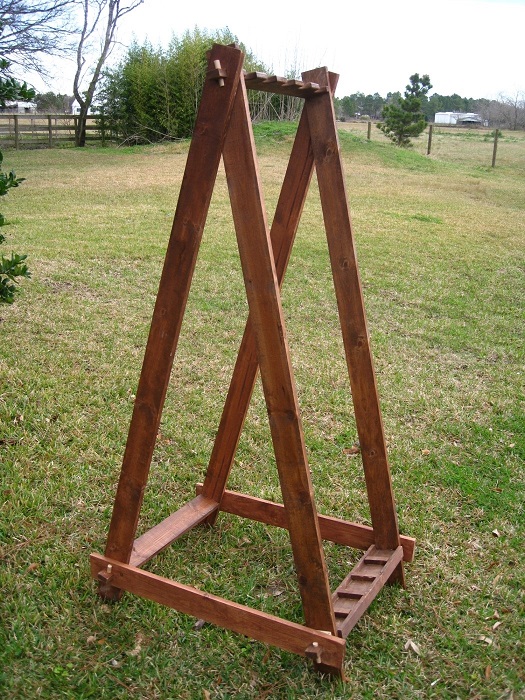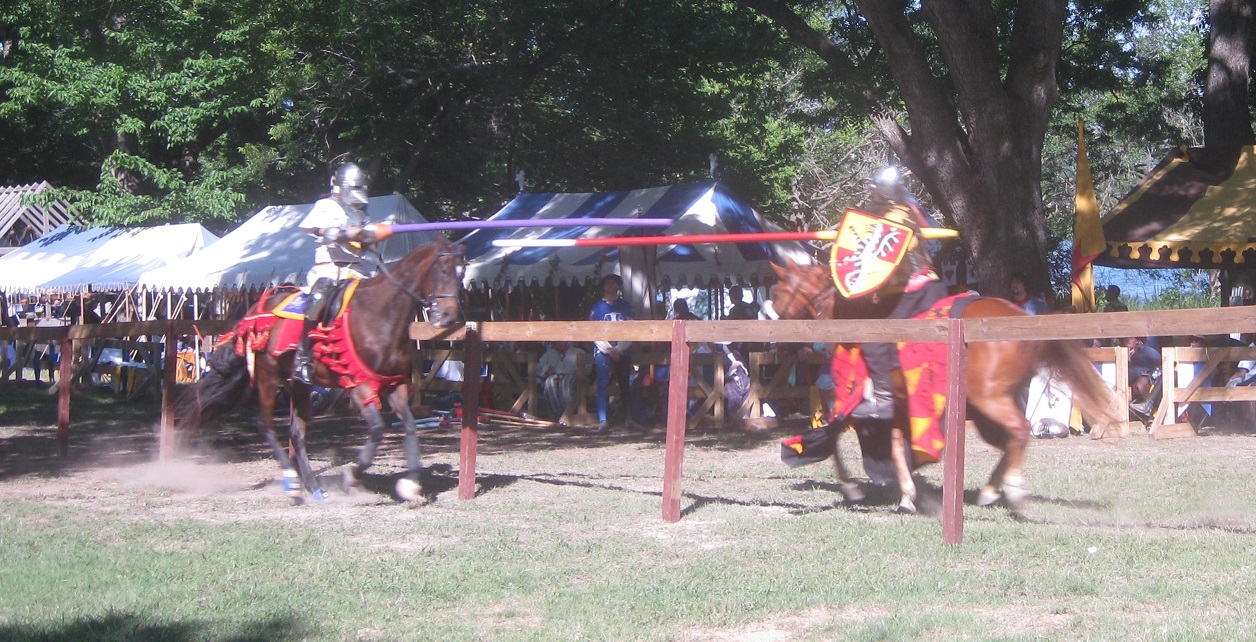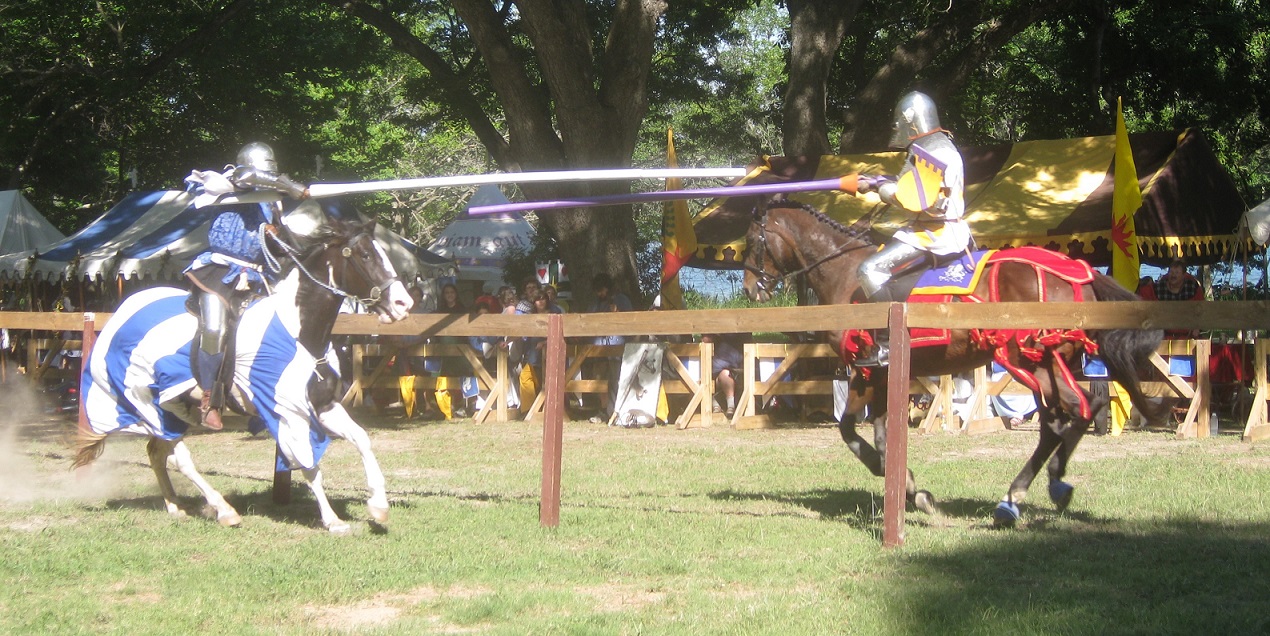
Originally published in Tournaments Illuminated #167 – Third Quarter 2008
The sun is shining and the trumpets blare as the knights are presented in glorious style to the gathered crowd. The heralds cry the pairings; soon the thunder of hooves is heard before the impact of lances is seen and the crowd cheers the prowess of well-placed lance strikes.
Welcome to jousting in the SCA!
The stellar kingdom of Ansteorra has been conducting jousting activities for over four years, and at this point in time has a body of experience in organizing and hosting a number of jousting tournaments, as well as experience in participating in several jousts across various kingdoms. We would like to offer up some observations and suggestions on improving jousts across the Knowne World. Our observations are relative to the maturity of the equestrian program in a given kingdom, and so it may be some time before everything we recommend can be fully incorporated in your kingdom.
HISTORY OF JOUSTING IN THE SCA
Jousting has long been considered the "holy grail" by many in the Society. It was something desirable but never attainable. Over the years, conditions have changed and jousting is now possible. All equestrian activities have inherent risks, so the challenge was to develop equipment and techniques that would minimize those risks. The breakthrough came with the development of a lance design that provides for a wide margin of error. Through the use of such equipment, the thrill of the joust can be incorporated into SCA events
Turning more specifically to the equipment involved, the lance consists of a solid base section, a cardboard tube as the middle section, and a replaceable foam tip. Once assembled and painted, it can present an attractive piece of equipment. Ideally, each jouster will have three lances, as well as a replacement tube or two already painted in their heraldic colours.
This will avoid unnecessary delays in preparation for each round of the joust, thus resulting in a smoother flow of the tournament.In addition, each jouster should have prepared, in advance, enough tips to handle the maximum number of passes expected. For example, if the expectation is that there will be six jousters, then each jouster will have five opponents. If they are each making two passes against all other opponents, and a triple pass final round between the top two, then each jouster has the potential to use thirteen tips. If the format is a number of rounds, each round consisting of three passes against all opponents, then the number of tips necessary increases appropriately. All the tips should be pre-painted to match the lances, and this requires some time and effort in advance of the competition. Since riders may be starting one of their passes from each end of the field, jousters might consider placing a container to hold their prepared replacement rips at both ends.
While every tournament organizer is free to set the equipment requirements for each tournament, extensive observation and testing has indicated that the preferred and most common shield style is an ecranche (a small shield worn at the left shoulder).
Therefore, it is recommended that each jouster have (and train with) an ecranche. As always, the jouster must be able to maintain control with the equipment that they are using. The absolute minimum size for an ecranche, in order to present an adequate target to your opponent, is 195 square inches (nominally 13" wide by 15" tall). [2015 addition – Based on experience across the SCA over the last 7 years, the smallest reasonable ecranche is 168 sq inches, 12” x 14”.]
A tilt rail (to separate the horses) is the centrepiece of the joust. It is recommended that the tilt rail be at least 120 feet in length, although longer is better. A longer tilt rail will allow more opportunity for the riders to settle their horses into the proper track, which results in better presentation. It is also important to provide adequate "run-out" space at each end of the tilt rail. We recommend at least 50 feet, but more is better whenever possible. (Figure 1). [2015 addition – Based on experience over the last 7 years, we have found that you must have at least 100 feet for the tilt rail with 130-150 feet being ideal, but you can get away with only 20 feet of run out space at each end. Preferably, all jousting horses should be trained to stop at the end of the tilt. ]
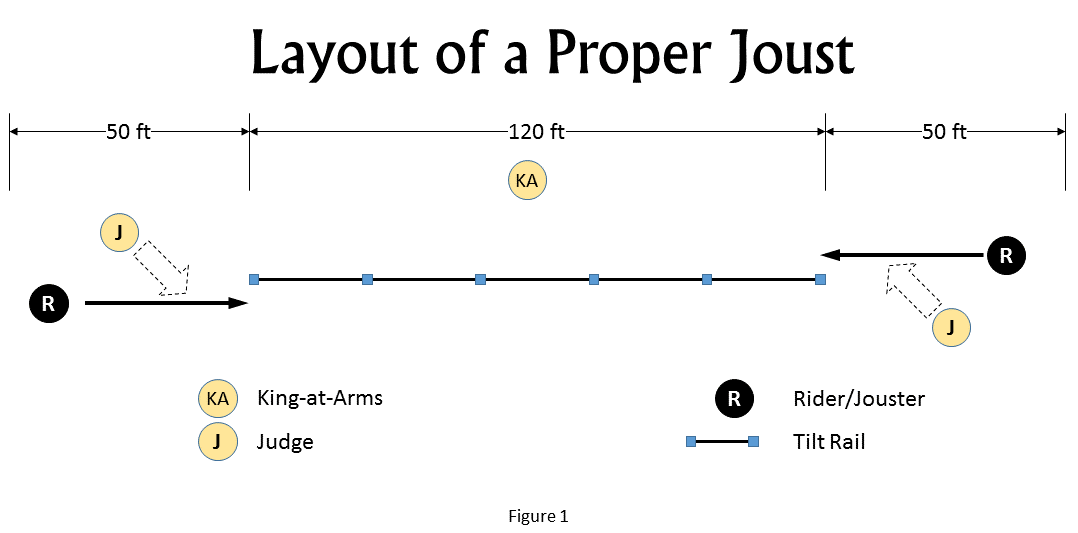
In addition to the individual equipment for each jouster, other equipment on the field will improve the flow and presentation of the joust, such as a rack at each end of the list to hold the lances. Plans for a simple, break-down lance rack can be found at http://www.greydragon.org/Equestrian/lance-rack/index.html.
Provisions for recovery of the broken foam tips can be enhanced by using simple gunny sacks or burlap bags instead of a black plastic trash bag.PREPARATION OF THE RIDER
For a joust, it should be recognized that the entrant is not so much an individual rider on a horse, but rather part of a working team. A rider will tend to stay mounted, and can benefit greatly from the services of both a personal herald and a valet. The personal herald speaks on the jouster's behalf and the valet assists with equipment needs during the course of the joust as well as attending to the horse.
Thorough training for jouster and mount is an obvious need, but so too is a display of arms for both rider and horse. A well-appointed rider will impress the gallery with a visual consistency including banners, standards, lances, and livery for their retainers. Additional details that are often overlooked include lance buckets for holding the standard while mounted and portable holes for posting the banners at the home end of the field.
PREPARATION OF THE FIELD
As previously mentioned, the field is centered on the tilt rail, so we need to address the personnel required to properly run a joust. The needs that must be covered include a king at-arms to orchestrate the field, ground crews to assist with the lances, judges to score the results, and a master of the lists to tally results and coordinate pairings.
The king-at-arms is the individual who may be thought of as the stage director and is often the marshal-in-charge, responsible for overseeing all the activities taking place on the field. This individual will set the pace for the activities and will coordinate all the other support staff. Ideally, the king-at-arms is mounted.
Although hopefully every rider will have at least a personal valet, as a minimum, there must be at least one ground crew member for each end of the field to handle lances. This includes passing a prepared lance to the rider before the pass and taking the lance from the oncoming rider at the end of the pass, as well as replacing tips between passes. Additional ground crew may be used for clearing the field of broken tips between passes and assisting in handling the horses.
Because jousting should ideally be about rewarding skill with the lance and the placement of the tip when the break is made, it is appropriate to have judges to evaluate each strike. This means that you need two judges, each of whom will focus on one rider's lance.
The master of the lists is necessary not only to coordinate pairings so each rider has an opportunity to tilt against all the other riders, but also to tally the results of each rider's passes. The master of the lists will coordinate with the heralds to present the scoring to the gallery.
SCORING THE JOUST
As mentioned above, the ideal in jousting is about rewarding skill with the lance, so we propose throwing out everything the Society has done to score jousting and use a medieval model instead. Experience has shown that some existing methods, such as determining a winner based on the number of broken pieces of foam, do not correlate to control of the lance. Variations in foam alone will produce inconsistent results. Additionally, we have seen that scoring which simply rewards the victor of any given pass can create a disincentive to sharing horses.
Recognizing that a critical aspect of jousting is different from chivalric combat in that jousting is tied to the ability to have access to a horse, the goal then becomes to establish a method of scoring that provides every rider with an equal opportunity to do well.
The best medieval model we have found was set down by René of Anjou and awards points for the place on your opponent where you broke your lance. While every event organizer can set the requirements for the tournament, one method that has worked exceptionally well is for each rider to use an ecranche, as defined earlier. With the use of an ecranche, a simple scoring method can be used whereby a break upon the ecranche scores three points, a break on the body scores two points, a break on the left arm (below the bottom edge of the ecranche) scores one point, and everything else scores no points. By having each rider make a set number of passes against every other rider (such as two or three), you can determine the victor. Another option is to use the points to determine the final pairing and have the top two participants run passes against each other to determine the ultimate victor. [2015 Addition – A slightly better scoring system we have used over the last 4 years or so is: 3 points for a break on the shield, 2 points for a break on the body or arm, and 1 point for a touch on the shield but no break (which happens somewhat regularly). Over the last 7 years across the SCA, the most common format has been that every pair of opponents makes 3 passes against each other.]
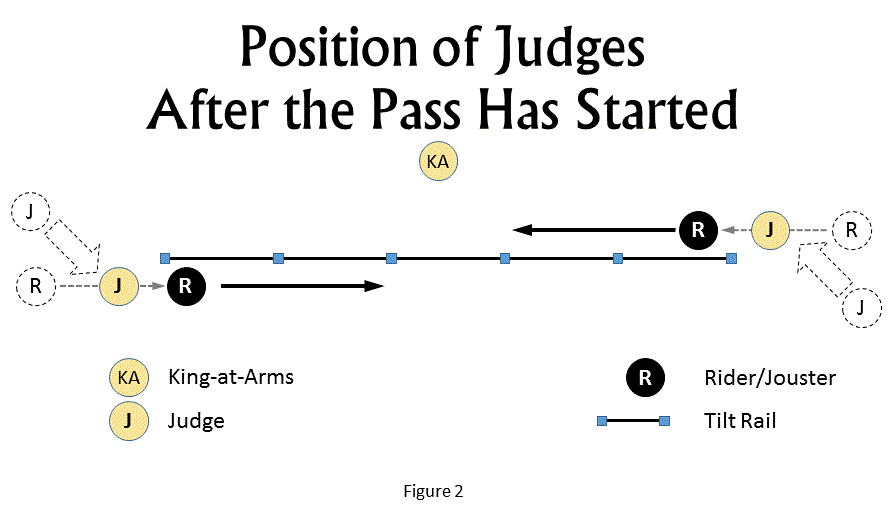
Because placement of the lance is the determining factor, it is necessary to have a judge determine the location of each strike. This is incredibly difficult to do when viewing the strike from the side, so ideally the judges should be placed behind the rider whose strike they are judging, as shown in Figure 2. Judges can start out of the way of the jousting rider (Figure 1), and move into position once the rider has started the run (which also moves them out of the way of the oncoming rider). There may be times when, although a certain pairing is announced, one of the jousters is not ready, and so the next pairing should be called. If another pairing for the round is not available to proceed, then jousters who are ready may make additional passes to fill the time; however, no points should accrue for these time-filling passes.
PUTTING IT ALL TOGETHER
Now that we have reviewed all the elements necessary to hold a jousting tournament, let us look at how all the elements come together. It all begins with the field being prepared and jousters ensuring that their lances and tips are ready and placed appropriately. The jousters then ready themselves and their retainers to enter the field and be announced to the gallery. Once the king-at-arms has determined that the jouster s are ready, the king-at-arms will enter the field (escorted by the two judges) and announce the start of the tournament. Ideally, the king-at-arms should introduce the two judges and explain their role to the spectators.
At this point, each jouster will present themselves to the gallery, ideally through the use of their personal herald. Once all the riders have been presented to the gallery, they will retire to the ends of the field to make final preparations, and the king-at-arms and the judges will move to their places on the field. Meanwhile, the master of the lists will announce the pairings.
The king-at-arm s will check with each rider to ensure their readiness to start the pass and will then give the starting signal (which is most commonly the term “laissez allei”) allowing the jousters to proceed. It is important to note that each rider must pay attention to his or her opponent to verify that all are truly ready to proceed and should be prepared to adjust their paces to ensure a strike as close to the center of the list as possible.Once the jousters have passed the judges as they set off down the tilt, the judges will move from their starting positions into a position directly behind the jouster they are judging. From this position they can see the lance strike and be out of the way of the oncoming rider. After the pass has finished, the judges will announce the placement of the lance strike to the king-at-arm s so that point s may be awarded properly. Each pair of jousters will make the specified number of passes against each other before the next pair begins. It is not necessary to break a tie because the points are cumulative.
When the jousters are running each pass from the same end of the field, the judges should swap sides after each pass. This ensures that judge s score for both riders rather than consistently scoring for the same riders. If the jousters are making a run from each end of the list, then the judges should stay on the same end, so again, they score for both riders. After each jouster has had the opportunity to make the specified number of passes against every other opponent, the points are tallied. Depending on the preferences of the tournament organizer, the victory may be determined by a number of methods. One common method is to simply award victory to the rider with the highest point total. In this case, the point totals and announcement can be done on the spot or saved for evening court. An alternative is to use the points to determine the top two competitors and have them make additional passes against each other to determine the ultimate victor. For example, every rider makes two passes against all the others, and the two riders with the most points make three final passes against each other.
ENHANCING THE PAGEANTRY OF THE JOUST
While foot combat will always be the mainstay of SCA events, a jousting tournament presents a unique opportunity to present a spectacular show as well as a competition. A joust is particularly geared towards being a much more interactive presentation than most other Society activities. Jousting provides an abundant range of opportunities to make it the most spectacular element of an event. We would like to provide several suggestions for 'spiffing up' your jousting tournament. The need for retainers provides opportunities for those who do not ride to be a valuable part of the show. Retainers and additional support staff can make all the difference in a well-run and spectacular Joust. In a traditional emprise (an equestrian pas d'armes), a personal herald presents each rider to the gallery, and they arrive with as much flair and style as they possibly can.
In foot combat, the competitors are used to being alone because there is a field herald calling the fights. In jousting, having a personal herald working interactively with the crowd on your behalf can greatly add to the spectacle (think of great tournament scenes in popular movies).
There are also several visual aspects that can significantly enhance the pageantry of the joust. These are tabards, a baton, banners and flags, a shield tree, and scoring flags.
Tournament organizers ought to have tabards for the king-at-arms, the judges, and the master of the list. These four tabards will help the gallery know who is running the field and it adds a lot to the show. If you are making tabards, you might consider making tabards for the key ground crew, as well. A baton for the king-ac-arms can also add to the ambience, and make the starting signal very visible even when it can't be heard. The baton can be as simple as a short white rod (of approximately 18 inches) to a very elaborate and decorated sceptre up to 24 inches or so in length.
Most people are familiar with using banners on flagpoles around the arena to increase the spectacle, but many people overlook banners that hang down from the tilt rail. These tilt rail banners can provide lots of heraldic substance to the tilt and improve the overall look of the field.
Depending on the size of the joust and the size of the gallery, it can be a nice advantage to use a shield tree to show the current pair of jousters and those two jousters that are next in the queue. Additional support staff will be helpful to maintain the shield tree as the pairings change. In the event a shield tree will be used, the tournament organizer should specify the desired shield size.
The last visual aspect to improve the pageantry of the joust is to provide the master of the list with scoring flags and scoring flag stands. There are two different options for scoring flags. A simple method is to use a flag for each point awarded. An alternative, which provides more information about each pass, is to use a different colored flag to denote the location of the strike.
In addition, certain touches can increase the pageantry, such as having the king-at-arms and the judges be mounted. This gives them flexibility in field placement, as well as enhancing the scenery. Mounted judges also enjoy the benefit of a better line of sight to judge the placement of the lance strike. In this scenario, the spectacle can be improved by having the judges ride to the king-at-arm s to announce the placement of the strike.
By following our suggestions for improving jousting tournaments, you will find that the crowds start to flock to your tournaments because the show is glorious. The sun will shine and the crowds will cheer as the thunder of hooves is heard and lance strikes are seen. Your tournaments, which previously perhaps only drew dedicated equestrians, will now draw the entire populace from across the kingdom, and jousting will become a central and popular activity for your events!
APPENDIX A: RESOLVING DIFFICULTIES
There are a number of challenging situations that we have encountered and know that every tournament organizer will run into at some time or another. We would like to offer some perspective on each one and suggest a solution for each.
- A rider cannot make a clean pass due to issues with their mount.
This might include a refusal to proceed or the rider being unable to ride close enough to the rail to present a valid target. Tournament sponsors must decide before the tournament starts how they want to handle this situation. We recommend that each rider be given two opportunities to make a clean pass down the tilt. If a clean pass cannot be made, then that particular pairing is moved to the end of the queue so the rider with the problem is given a few minutes to settle his horse before he is allowed to try again. If the situation happens again, and the rider cannot make a clean pass in two attempts, then the competitor should be expected to withdraw from the tournament.
- A rider begins the tournament by making a few acceptable passes against initial competitors, but then begins having problems and has to withdraw.
The question here is whether the points scored by the initial opponents count in their total? Our recommendation is that any points scored against an opponent who later withdraws are eliminated from the tally so that each rider has the potential to score the same number of points. [2015 Addition – The important point is that each person have the potential to score the same number of points. Removal of the initial points works in a true round-robin tournament but may not work in round-robin tournaments of smaller sub-groups. ]
Related to the preceding is when a horse does nor balk entirely, but does nor run close enough to the tilt rail to present a quality target to the opponent. In this case the jouster who doesn't "present cleanly" should be encouraged to concede the points to her opponent for the run. If she cannot present consistently, she should be encouraged to withdraw or seek a more suitable mount. The intention is to allow the jousters to resolve the issue on an honor system, as much as possible.
- A lance length is specified for a given tournament and a jouster is unwilling or unable to use the specified length.
Our recommendation is to allow him to use the length with which he is comfortable, up to the maximum length specified. It isn't really a problem for two jousters to use (cardboard and foam) lances of different lengths.
- Certain equipment is specified for a particular tournament and a jouster is unwilling or unable to ride using that equipment.
In this case, an effort should be made to accommodate that rider's participation. An example would be a rider who is unwilling to use an ecranche in a tournament where the ecranche is a primary target. Assuming that we are using a scoring system of three points for an ecranche strike, two for the body and one for the arm, then in this case, our suggestion is to allow the ecranche-less rider to compete bur with a limitation. The limitation would be that the maximum number of points that either rider can score when jousting against the given ecranche-less rider is two points. In other words, the ecranche-less rider can only score two points on any pass against every other rider, and the other riders can only score two points against the ecranche-less rider but they can score three points against all the other riders (who have an ecranche). [2015 Addition – This scoring adjustment really only works in a round-robin tournament.] This solution allows as many opportunities to joust as possible while still allowing tournament sponsors to establish a particular style for their event.
If you encounter a situation that you would like assistance with, the authors are happy to engage in further dialogue about jousting issues within the SCA. Please see their biographies for contact information.
PETER C BARCLAY is a (retired) US Army officer who enjoys being stationed in various places around the globe, especially Europe which gives him an opportunity to study medieval artifacts in person. He is serving a "tour of penance" at the Pentagon to pay for all the fun he has had over the years. He lives in northern Virginia with his wife and two cats. He can be contacted at terafan@greydragon.org
RHYS TERAFAN GREYDRAGON (OL, OP) is a 14th C. Welshman who dabbles in myriads of things, but mostly enjoys riding and equestrian games of skill, along with brewing, wood working, and tent-making.
DAVE WISE holds a Juris Doctorate, is an attorney by profession and an entrepreneur by inclination, and has been an SCA member for 27 years. Home has been with his lovely wife Teresa in Ansteorra for the past 19 years. They have two children. Caitlin and Andrew.
ALEXIS LABOUCHE (KSCA, OL, OP) benefitted from opportunities in France. He rose through the ranks to become captain and was eventually knighted for service to the crown. After Castillion, he left France to take up the Yorkist cause in the service of Richard of York .
